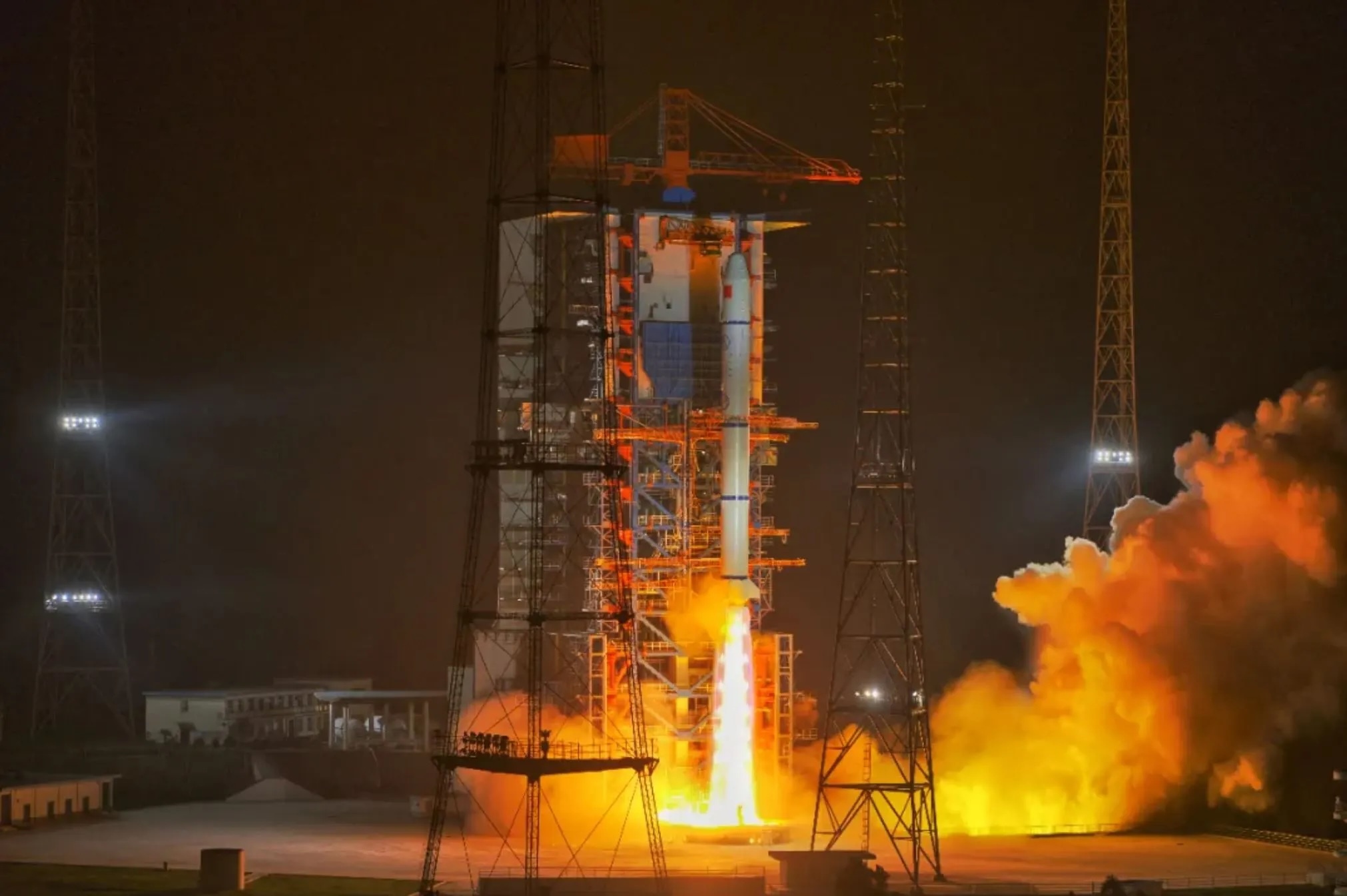15.03.2024

A Long March 2C lifts off from LC-3 at Xichang carrying the Yaogan-30 (07) group of satellites. Credit: OurSpace
HELSINKI — A pair of Chinese spacecraft, apparently intended for lunar orbit, have potentially been lost following an issue with a Long March rocket’s upper stage on Wednesday.
A Long March 2C rocket lifted off from Xichang Satellite Launch Center at 8:51 a.m. Eastern (1251 UTC) March 13. There was no official acknowledgement of the launch until early Thursday, when Chinese state media Xinhua announced the DRO-A and B spacecraft had not been inserted accurately into their designated orbit by the rocket’s Yuanzheng-1S upper stage.
It is currently unknown whether the spacecraft and their mission can be salvaged. It is also unknown what orbit the satellites are in.
Xinhua provided no details of the nature of the DRO-A and B satellites. However, it is thought that the pair were intended to enter a distant retrograde orbit (DRO) around the moon. If correct, this would have seen DRO-A and B target a high lunar orbit that moves in the opposite direction to the moon’s rotation around Earth.
DRO orbits are highly stable and could offer advantages for exploration, science, and infrastructure, such as acting as a waypoint, lunar observation and communications.
The DRO-A and B satellites are designed to communicate with another satellite, named DRO-L, in low Earth orbit (LEO), according to a paper published in the Journal of Deep Space Exploration in 2023. The paper discusses high-precision relative navigation technology for a pair of satellites operating in DRO. China launched the DRO-L satellite, developed by IAMCAS under the Chinese Academy of Sciences, into LEO on a Jielong-3 rocket in February.
China had neither indicated plans for a lunar launch nor officially stated the purpose of the DRO-A/B satellites. However, adding weight to the idea that the launch was targeting the moon is that U.S. Space Force’s space domain awareness group has not reported any new objects in LEO associated with Wednesday’s launch. Launches beyond LEO often take longer to be cataloged. The pertinent airspace closure notices issued before launch also suggest a launch heading beyond LEO.
China tested out using a lunar distant retrograde orbit in 2022 with the service module from the successful Chang’e-5 moon sample return mission. This was part of the spacecraft’s extended mission. NASA’s Orion spacecraft for the Artemis 1 mission entered DRO in November 2022.
The DRO-A/B mission does not appear to be a major part of China’s lunar exploration program. It is rather a technology and orbit-testing mission that could play a role in its wider lunar ambitions to establish lunar navigation and communications infrastructure to support lunar exploration.
The DRO-A and B satellites will also be relatively small, with the Long March 2C capable of launching around 1,250 kilograms to geosynchronous transfer orbit (GTO).
Launch tracking
The launch, despite being conducted quietly, was tracked. Apparent footage of the launch of a Long March 2C lifting off from Xichang was uploaded to the Chinese social media site Douyin shortly afterwards.
The Taiwanese Ministry of National Defense posted on the X social media site that it detected and tracked a launch vehicle originating from Xichang traveling through its air defense identification zone (ADIZ) as it headed toward the West Pacific Ocean. The launch would have been expected as China issued airspace closure notices days ahead of the launch.
The first signs the launch had not gone according to plan came through official silence. China’s main space contractor and maker of the country’s Long March rockets, the China Aerospace Science and Technology Corporation (CASC), usually issues a report immediately after the launch payloads are inserted into their intended orbits and deemed operational.
A report of launch success usually follows from within minutes for launches to low Earth orbits, but can take hours, depending on the intended orbit. Chinese state media typically release a short statement within hours of launch in the case of failure of a launch vehicle.
The launch issue appears to be the most serious issue with Long March rockets since an April 2020 launch failure. The Palapa-N1 satellite for Indonesia was lost due to a Long March 3B third stage failure.
China had conducted well over 100 consecutive Long March launches successfully since then. The anomaly may not have a great impact on China’s wider launch plans, as the rocket’s first and second stage performed nominally, and the issue isolated to the infrequently-used YZ-1S upper stage.
The hypergolic Long March 2C has proven reliable, with a single failure across its more than 70 launches since its debut flight in 1982. Wednesday’s anomaly is the first time a Yuanzheng series upper stage has not conducted its mission successfully.
CASC says China is aiming to launch around 100 times across 2024. This includes the ambitious Chang’e-6 lunar sample return mission.
Quelle: SN
